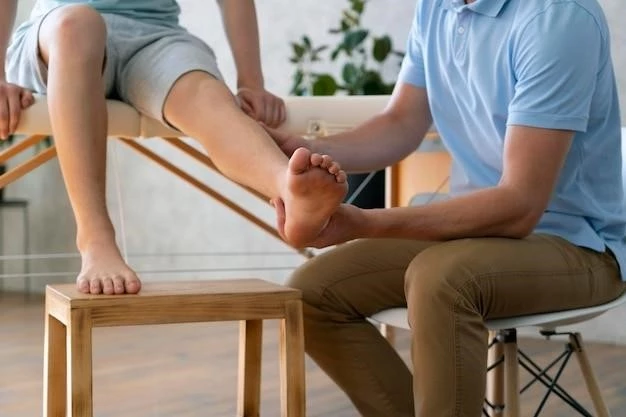Clubfoot⁚ Understanding the Condition
This section covers the causes, risk factors, treatment options, early detection, surgical intervention, long-term prognosis, bracing techniques, physical therapy benefits, research, and innovations related to clubfoot.
Causes and Risk Factors
Clubfoot can be idiopathic or associated with genetic, environmental, or neurological factors. Possible causes include abnormal positioning in the womb, family history, and neuromuscular disorders. Risk factors may include gender, family history of clubfoot, and environmental factors such as smoking during pregnancy. Understanding these factors is crucial for diagnosing and managing clubfoot effectively.

Treatment Approaches for Clubfoot
This section explores various non-surgical and surgical interventions to effectively address clubfoot deformity.
Non-Surgical Treatment Options
Non-surgical options for clubfoot include the Ponseti method, stretching, casting, and bracing. The Ponseti method involves gentle manipulation, casting, Achilles tenotomy if needed, and bracing. Stretching exercises help maintain flexibility. Bracing is crucial to prevent relapse. Non-surgical approaches are highly effective in correcting clubfoot deformity, especially when initiated early in infancy.
Surgical Intervention
Surgical intervention for clubfoot may be considered in cases where non-surgical methods are ineffective. Procedures may involve soft tissue releases, tendon transfers, osteotomies, and joint fusions. Surgery aims to correct bony alignment and rebalance soft tissues. Following surgery, bracing is often required to maintain correction. While less common than non-surgical approaches, surgical interventions can be beneficial for severe or recurrent clubfoot deformities.
Managing Clubfoot in Newborns
This section focuses on strategies for early detection and intervention in newborns with clubfoot deformity.
Early Detection Strategies
Early detection of clubfoot can be achieved through prenatal imaging, physical examination after birth, and screening programs. Key signs include foot abnormalities, metatarsus adductus, and equinovarus positioning. Prompt identification allows for timely intervention using non-surgical methods. Collaboration between healthcare providers and parents is vital for early detection and successful management of clubfoot in newborns.
Long-Term Management and Prognosis
This section discusses the prognosis of untreated clubfoot, bracing techniques, and the benefits of physical therapy in long-term clubfoot management.
Prognosis for Untreated Clubfoot
Without intervention, untreated clubfoot can lead to significant functional limitations, gait abnormalities, and pain in adulthood. Untreated cases may result in chronic pain, arthritis, and decreased quality of life. Early intervention is crucial to prevent long-term complications and ensure optimal foot function. The prognosis for untreated clubfoot underscores the importance of early diagnosis and appropriate management strategies.
Bracing Techniques for Long-Term Management
Bracing is a vital component of long-term clubfoot management to maintain correction achieved through casting or surgery. Dynamic or static braces help prevent relapse and support foot development. Compliance with bracing protocols is essential for successful outcomes. Properly fitted braces, worn for the recommended duration, play a key role in ensuring the long-term functionality and stability of the corrected foot.
Physical Therapy Benefits
Physical therapy plays a crucial role in clubfoot management by improving strength, flexibility, and range of motion. Therapeutic exercises and interventions help enhance motor skills, balance, and coordination. Physical therapists work closely with patients to optimize functional outcomes and prevent disability. Collaborating with a skilled physical therapist is essential in achieving comprehensive care and promoting the overall well-being of individuals with clubfoot.
Advancements in Clubfoot Research
This section focuses on current studies and innovative approaches in the field of clubfoot treatment and research.
Ongoing Research Studies
Ongoing research studies in clubfoot focus on genetic factors, treatment outcomes, bracing adherence, and patient-reported outcomes. Researchers are investigating novel interventions, advanced imaging techniques, and predictive models for long-term prognosis. Collaborative efforts between clinicians, researchers, and families drive forward the understanding and management of clubfoot deformity. Stay updated with the latest advancements in clubfoot research for improved care outcomes.
Innovations in Clubfoot Treatment
Recent innovations in clubfoot treatment include 3D-printed braces, minimally invasive surgical techniques, and customized orthotic devices. Emerging technologies like virtual reality are being explored for rehabilitation. Novel research on stem cell therapy and gene editing shows promise for future treatment modalities. These innovative approaches aim to enhance treatment efficacy, patient comfort, and long-term outcomes for individuals with clubfoot deformity.
